I went to the Emerald City Comicon this past weekend. It’s a big convention here in Seattle for comic related pop culture. It was my first time attending the event. My daughter is big into Japanese Anime and she went with her friend and cousin and thousands of other people. I was a good dad and took them. I can’t say I have ever been into comics but I have plenty of friends that are. When I see a superhero movie, I know just what is told on the screen. I don’t know the backstory so some of the inside jokes go past me (“Deadpool broke through the 4th wall? And that is what?.”).
There were some great and not-so-great costumes (a short Darth Vader?). People have considerable passion for the characters they dress up as. Which they refer to as cosplay. They work hard on their costumes and want to show them off and be recognized for their work.
I like to think that many of us have a similar passion for shoes but we likely come up short in comparison. Which is probably good and healthy. Still this shoe passion can cause some anxiety when it comes to shoe care. Which is surprising since most men don’t care about shoe care. But I do. And you do. Or you should. The anxiety often plays out in online shoe forums. Do this. Don’t do that. Don’t don’t do this. Don’t do what you shouldn’t not do. Oh whatever. Read this thread on someone asking about using saddle soap. That sure clears things up.
Almost all the shoe damage I have seen is from wearing the shoes. I believe it’s actually fairly difficult to destroy your shoes by using shoe care products. Especially if you follow the directions on the product. Even if you don’t read the directions, your shoes will likely be okay. At least until the next time you wear them.
I am not a leather expert. Any advice I give on my blog is based on use of methods I describe. I can’t guarantee you will be successful or that in 10 years down the line, your shoes won’t (or will) fall apart. I can say (and will say (or will write)), that I have cleaned and conditioned far too many shoes and have a cabinet full of products which I have tried. So I have some experience.
I have written about conditioning shoes with glycerin in the past but in this post, I will cover it in more detail. Glycerin treatment is a method used by a number of the Japanese shoe bloggers with good success and where I learned the technique.
Glycerin is a non-toxic, sweet liquid that is used extensively in cosmetic creams. It penetrates the skin and leaves your skin with a cool, soft feel. It is also present in many shoe care products for the same reason. There a large volume of online information on glycerin and leather. Apparently the Smithsonian uses it for leather restoration.
For this effort, I am working on a pair of vintage Florsheim “Antique Gold” 31786 Beacon shoes. The pair was made in 1968 and is made from a heavily textured leather that Florsheim called “Walnut Calf”. A number of people online have described the leather as bison or buffalo. It could be. Or might not be. It is thick and the grain of the leather has an east-west pattern. The leather is the thing that gives this pair of shoes their character.
This is a summary of how I treated the pair:
- Brush off surface dirt
- Wipe upper and sole with damp cloth
- Clean interior of the shoe with an alcohol wipe
- Clean the the upper with Lexol Leather Cleaner
- Condition the upper with Lexol NF Neatsfoot
- Treat the shoe with glycerin solution (one part vegetable glycerin, two parts water)
- Interior sanitation using a UV sanitizer
- Two rounds of Bickmore Bick 4
- One round of Allen Edmonds Light Brown shoe cream
This is a photo of the shoes before any treatments. They were dirty and the toe had some curl but not too bad.
After cleaning the shoes (described above), and conditioning them with Lexol NF, I let the shoes rest a day before treating them with the glycerin solution. The glycerin solution is watery so I apply it by dipping cotton strips into the solution and applying the strips to the surface of the shoes. I left cedar shoe creams in the shoes during the treatment.
I wrapped the shoes in plastic wrap to keep the cloth tight to the surface of the leather. The shoes were left in this state for six hours. When I took off the cloth strips, the leather was saturated with the solution and was significantly darker.
The leather darkening was likely due to the water being absorbed into the leather. As the shoes dried out and the leather lighthened up. Below is a photo of the pair the next day.
I allowed the shoes to rest for about a week before doing any further treatments. The leather felt soft and cool to the touch like your hands would after using a moisturizing cream. The pair was completely dry after a few days.
The following weekend, I gave the shoes two rounds of Bick 4. Why two rounds? Isn’t two is better than one, right? I like Bick 4 quite a bit and have been giving most of my vintage shoes multiple rounds of Bick 4. So why break habit?
I debated a bit on what cream and color to apply to the shoes and decided on Allen Edmonds Light Brown shoe cream. Its a high pigment shoe cream and a little goes a long way. I wanted to keep the color of the shoes light. Below are photos of the finished product.
The shoes are narrower than my other Florsheim Imperial Kenmoors of the same size. The shape of the shoe appears a bit more pointy as well. So they might use a different last.
The shoe is partially leather lined and has a rubber sole. The reverse storm welt has an upper band of stitching like you find on Alden shoes. This is an unusual feature for a pair of vintage Florsheim shoes.
The right shoe has a stain on the vamp that I tried to get out using Saphir Reno’Mat but it didn’t pull out the spot. Oh well.
I wore the shoes around on Saturday. They fit fairly well. The heel counter area felt a bit low. They looked great. Well, at least I thought they did.
Now I need to start working on my Chewbacca outfit for next year’s comicon. Either that or Yoda.
See an update on the pair in this post.

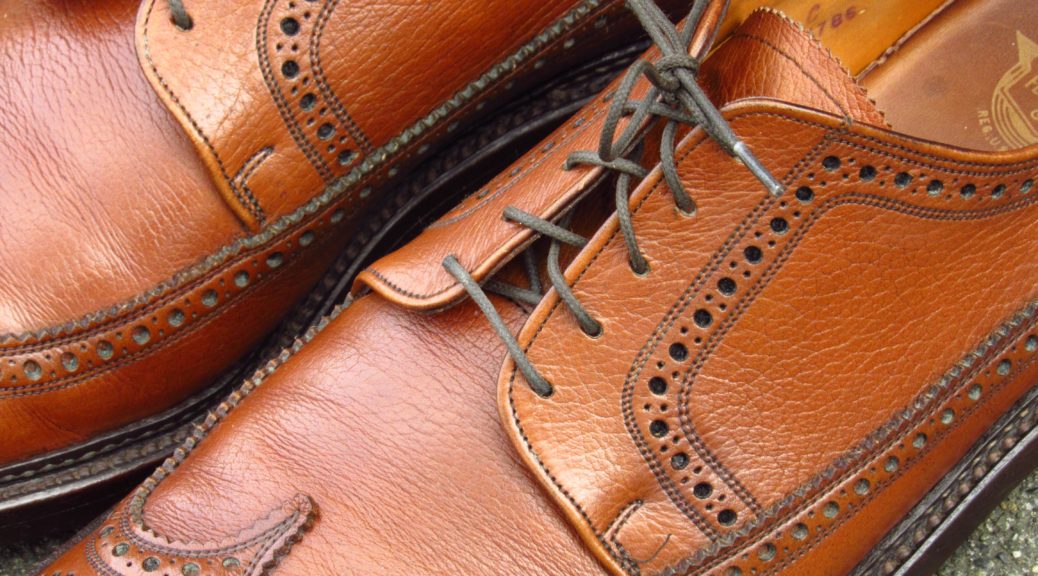
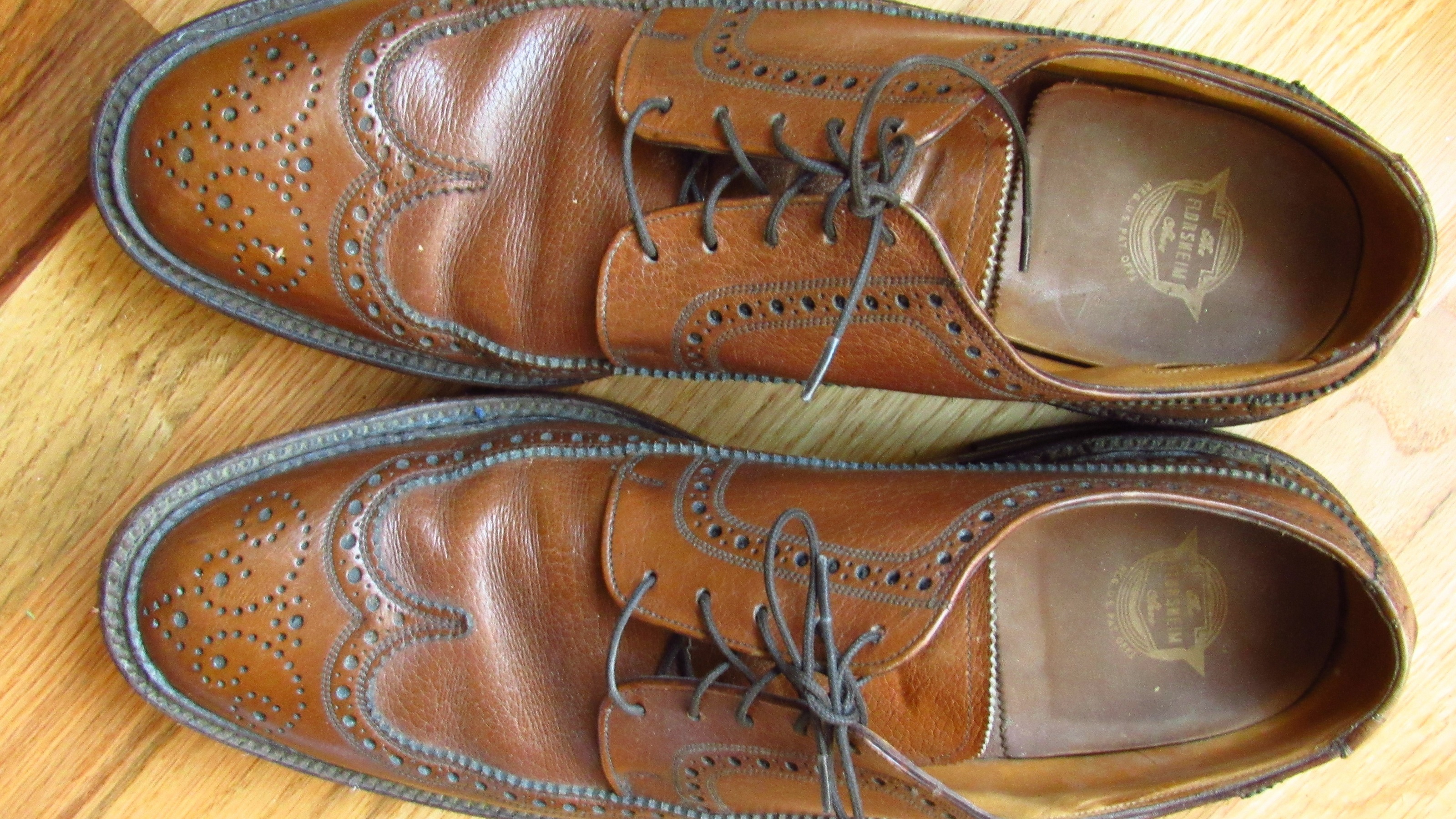
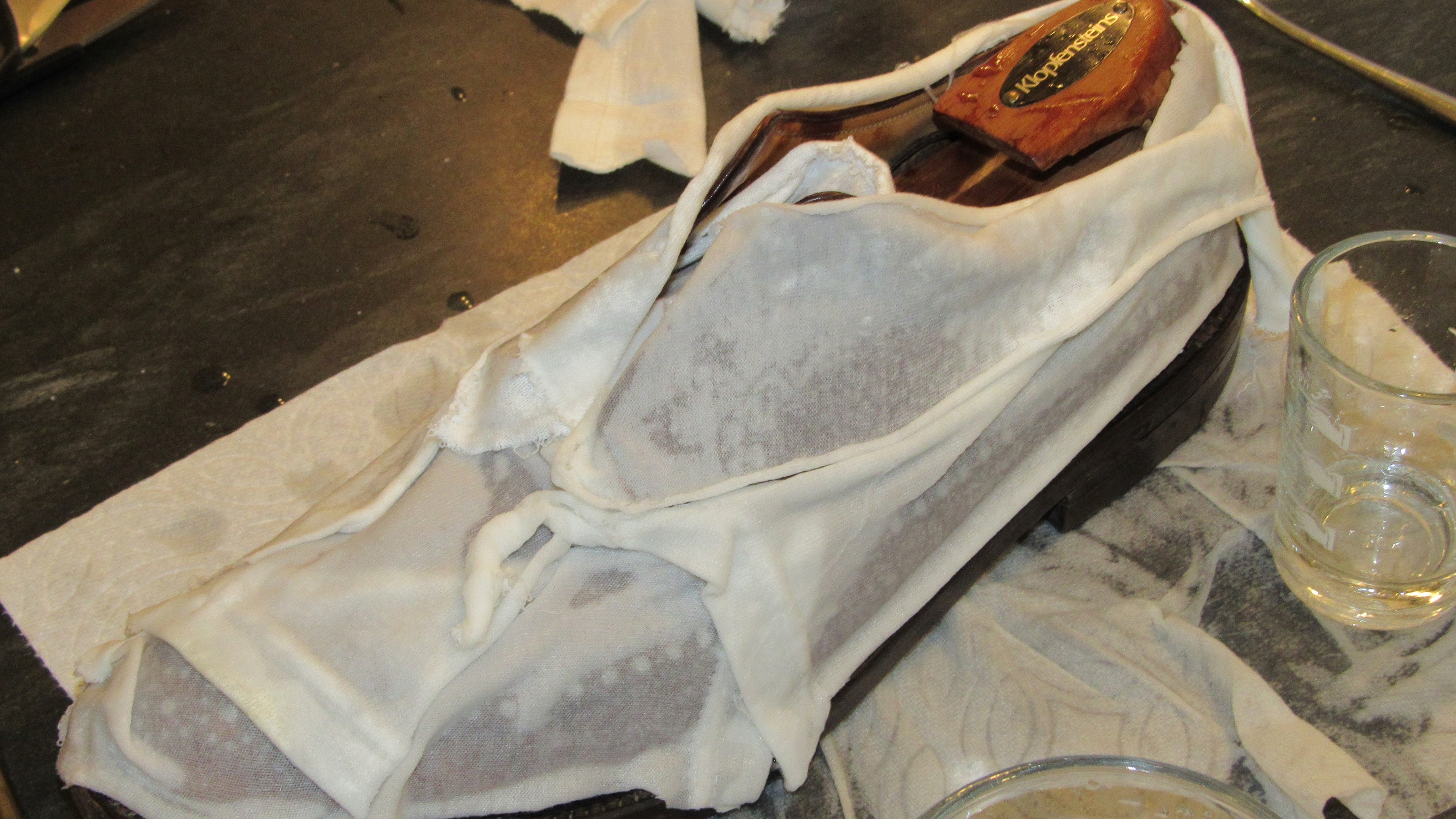
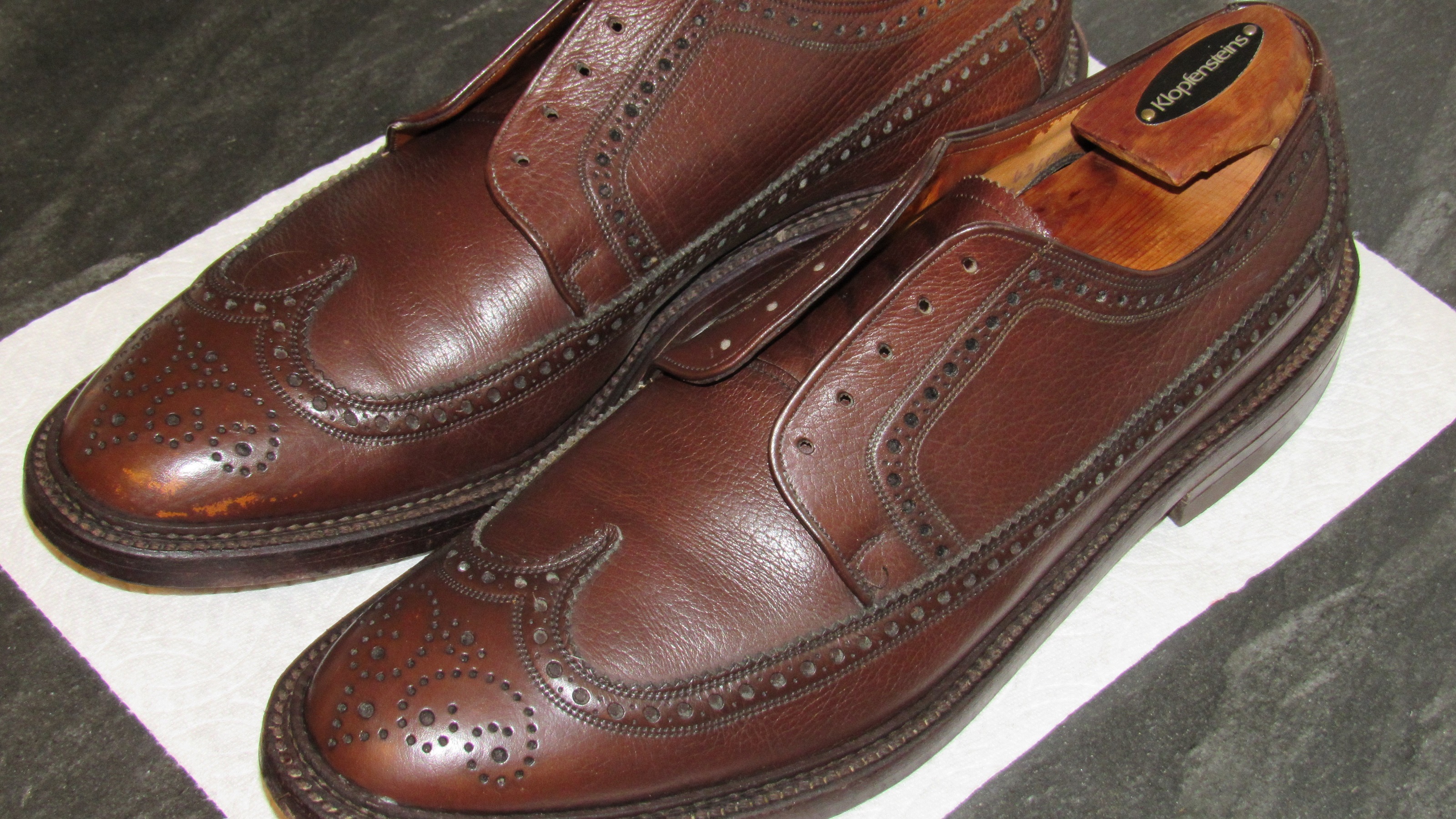
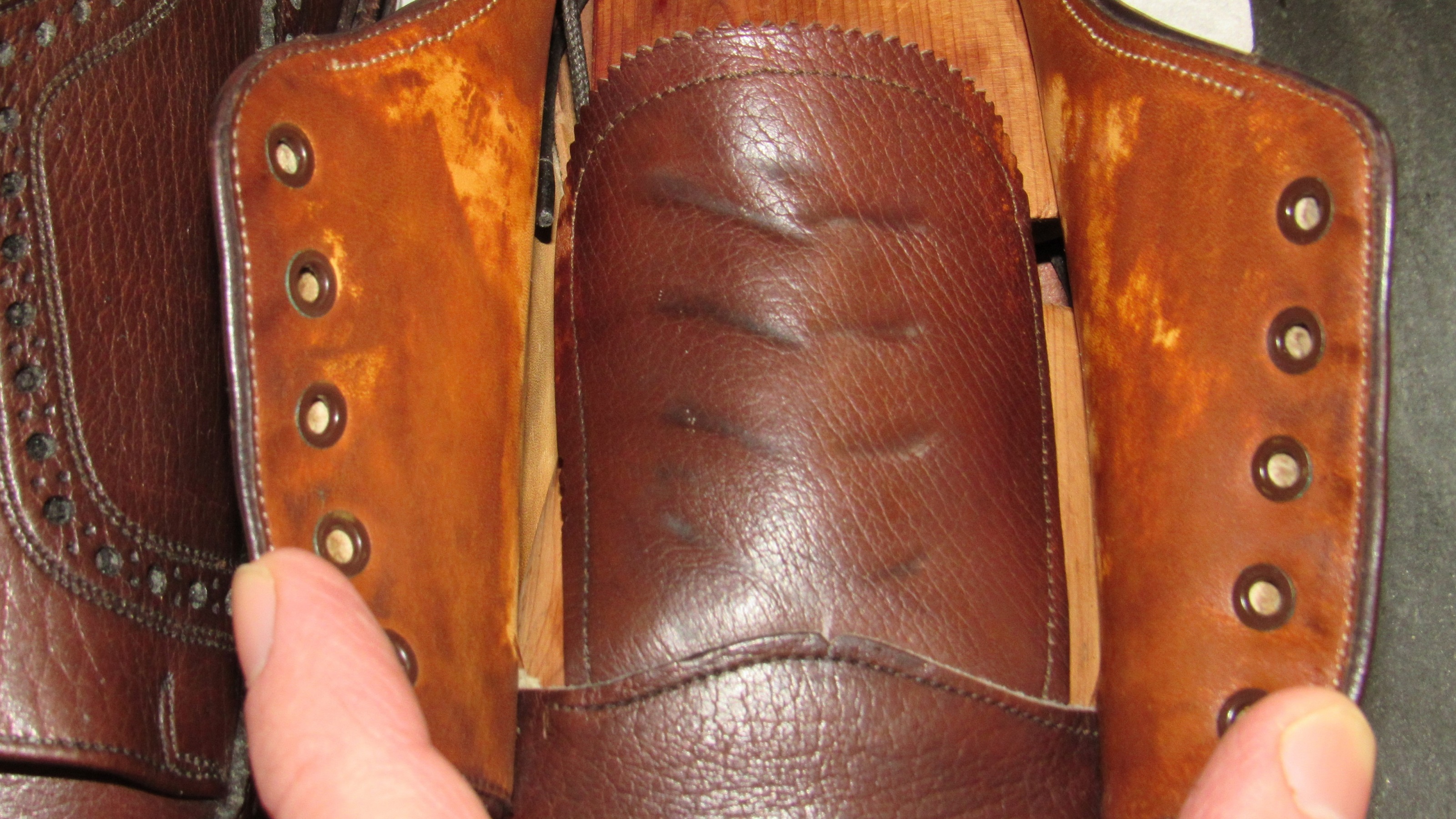
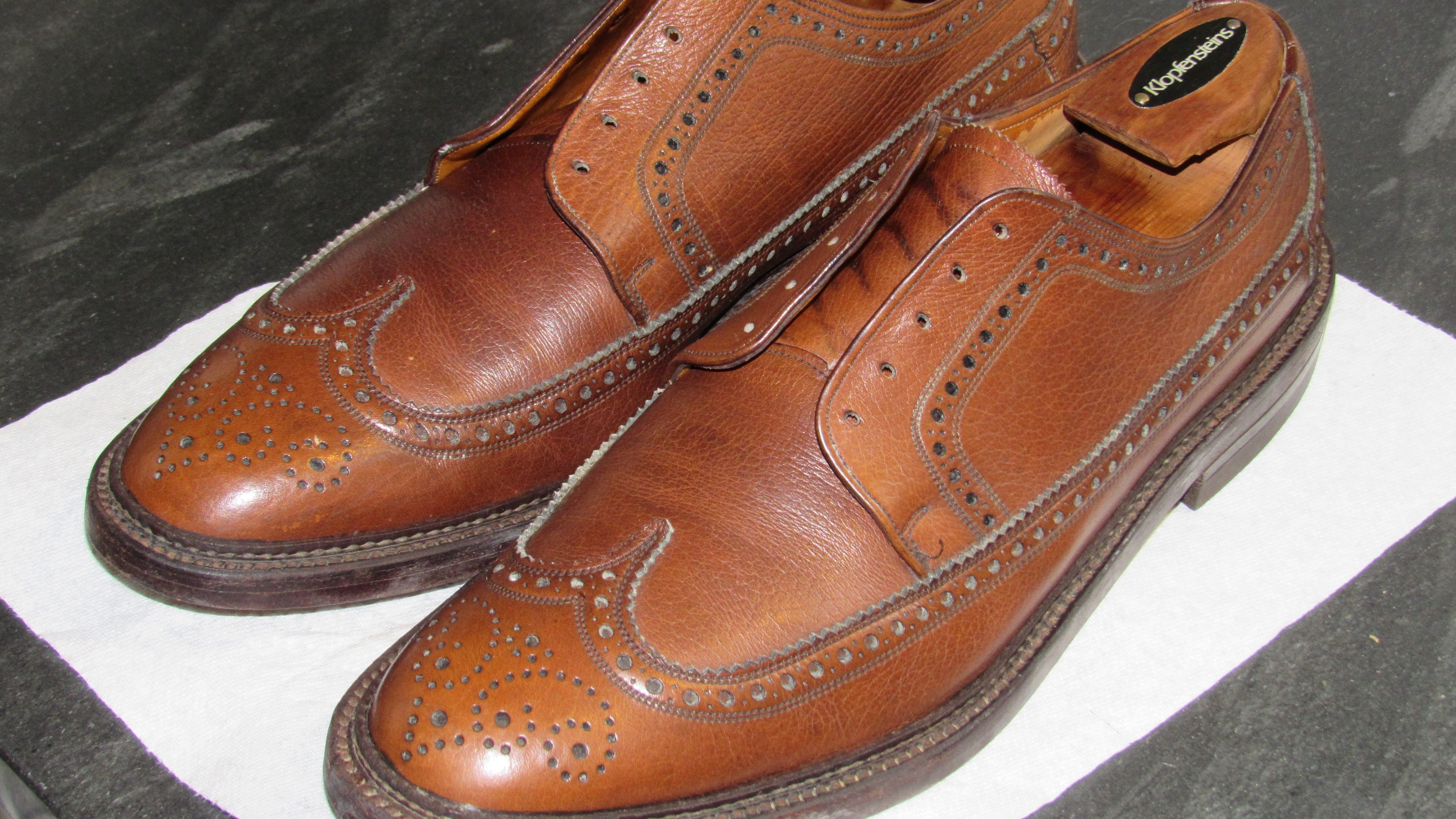

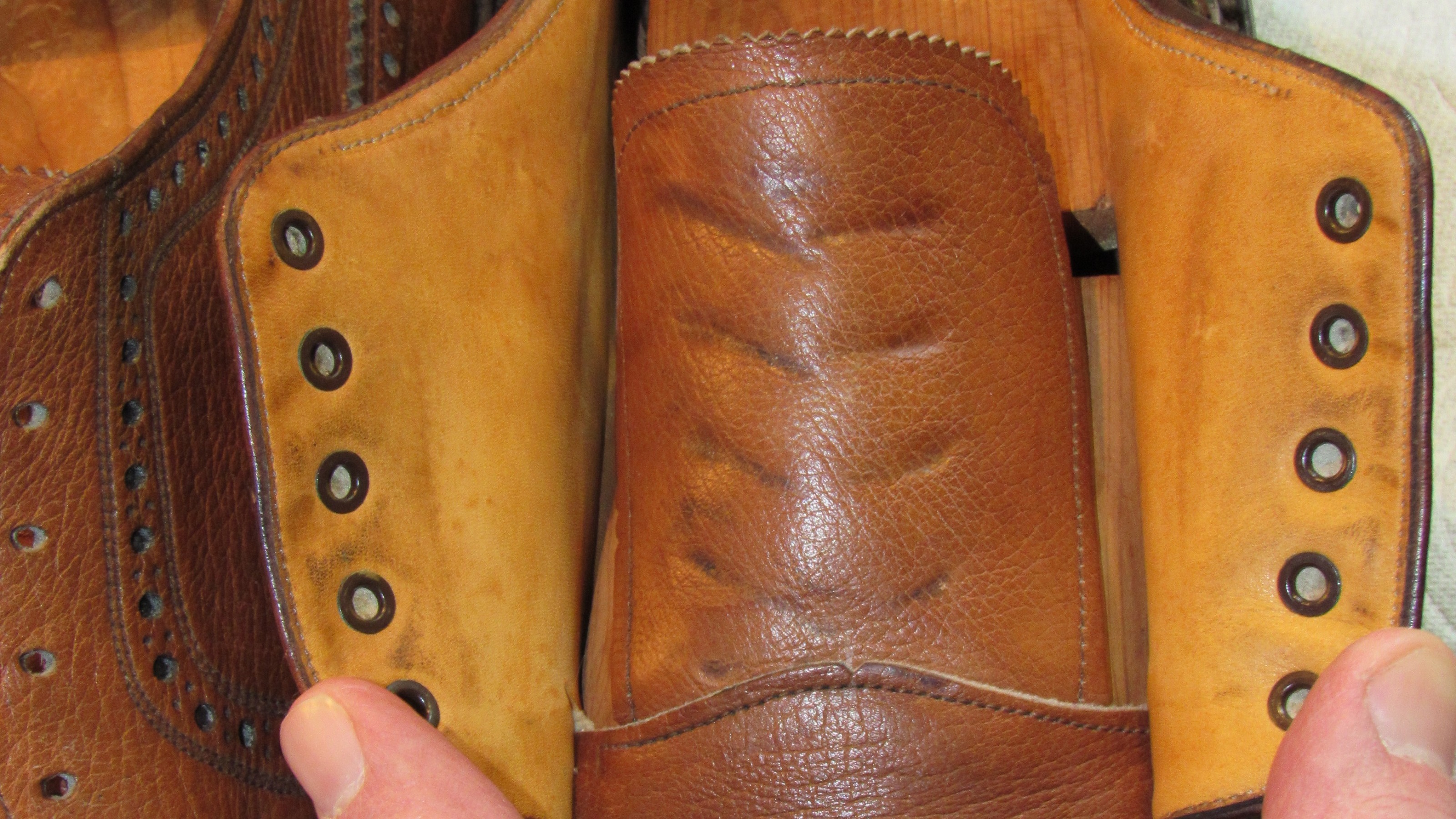
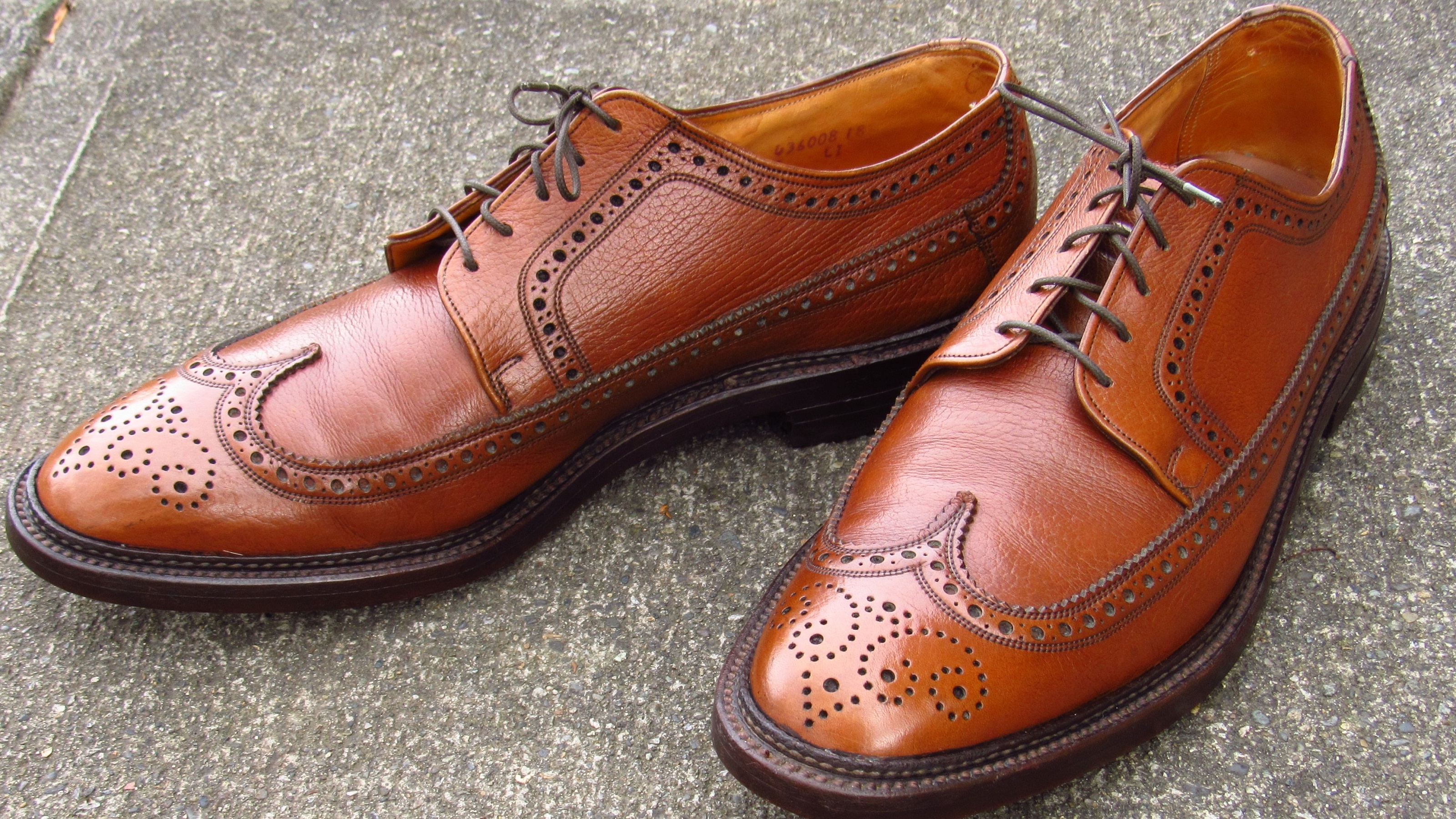
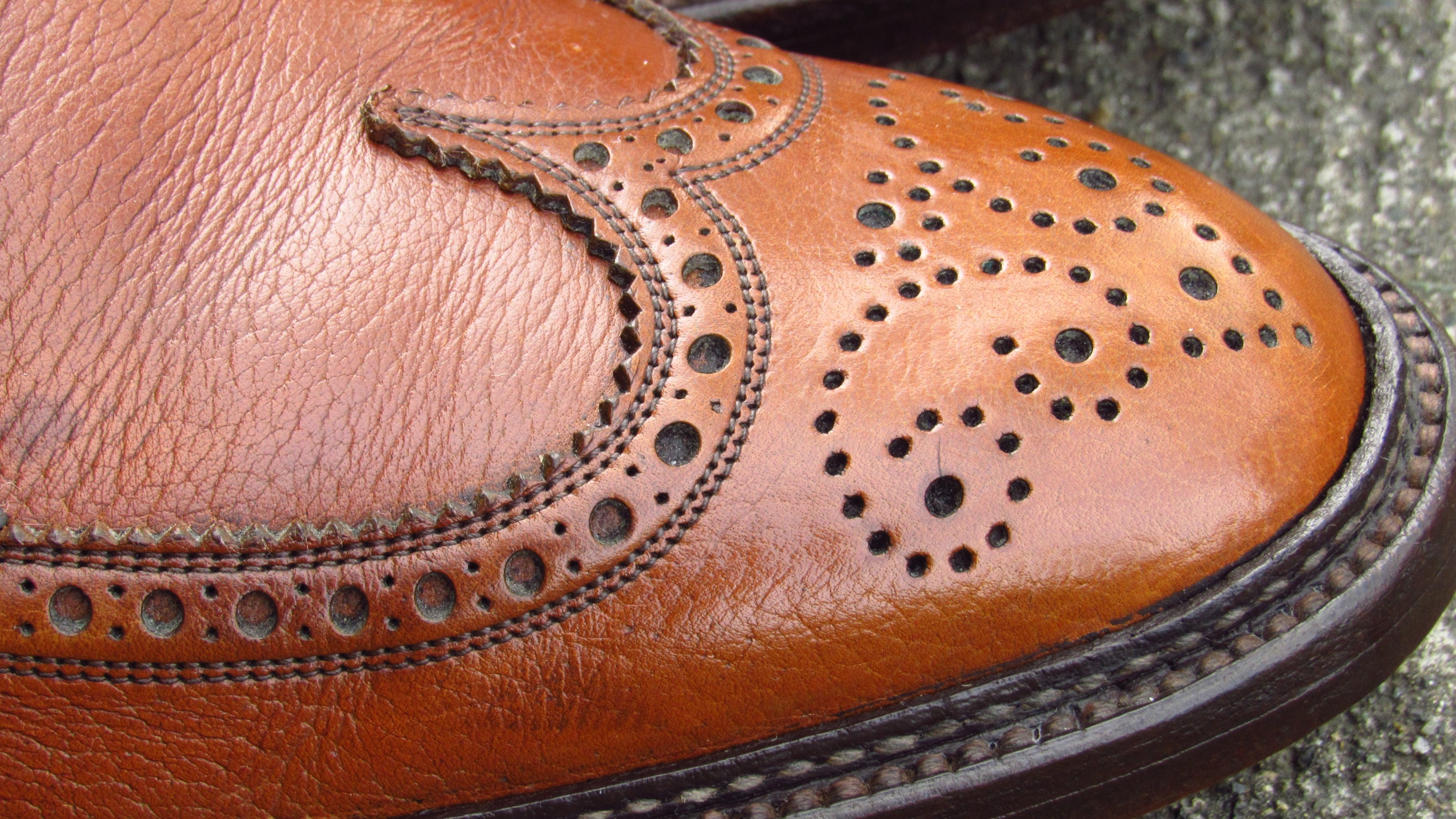
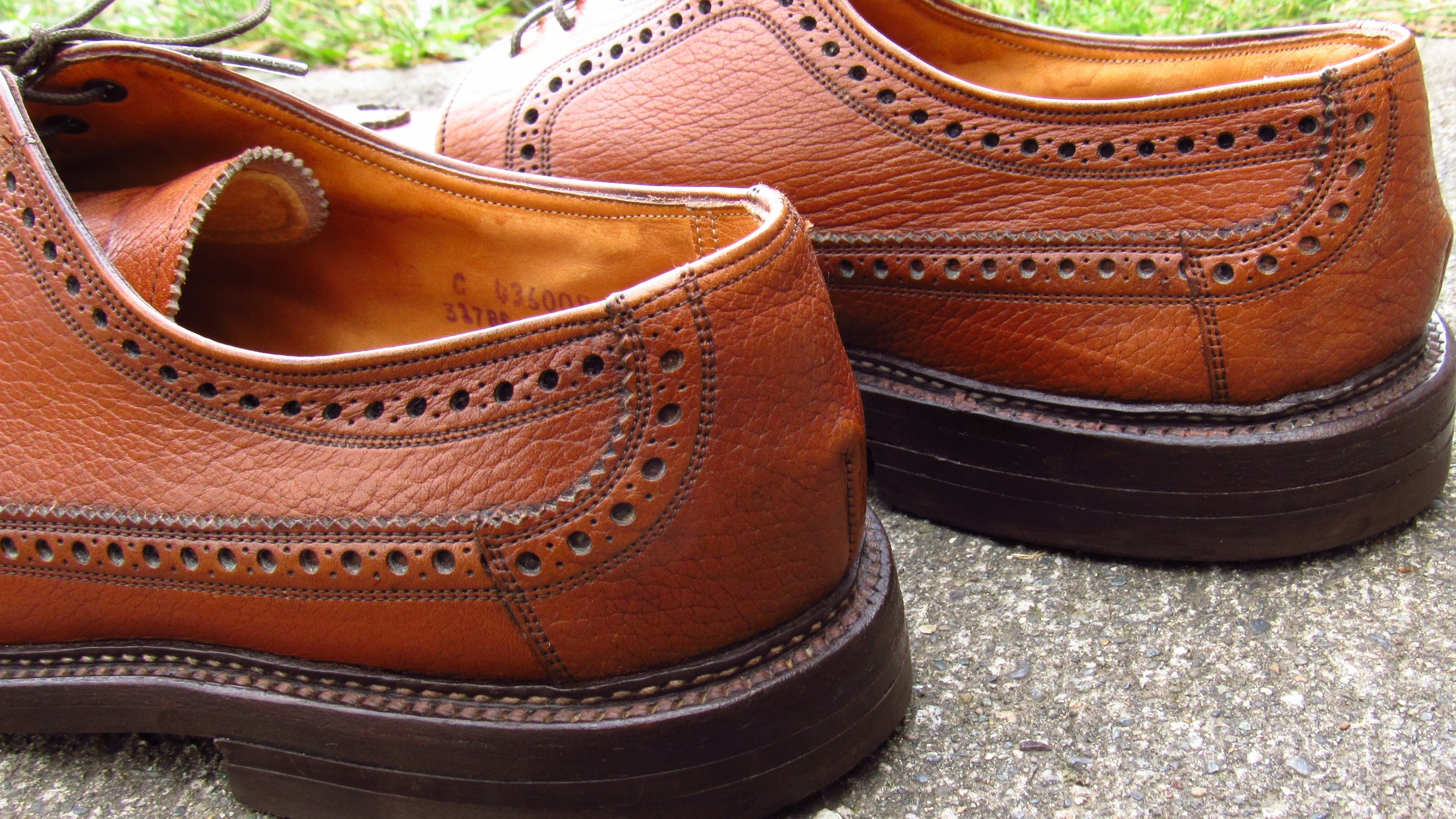
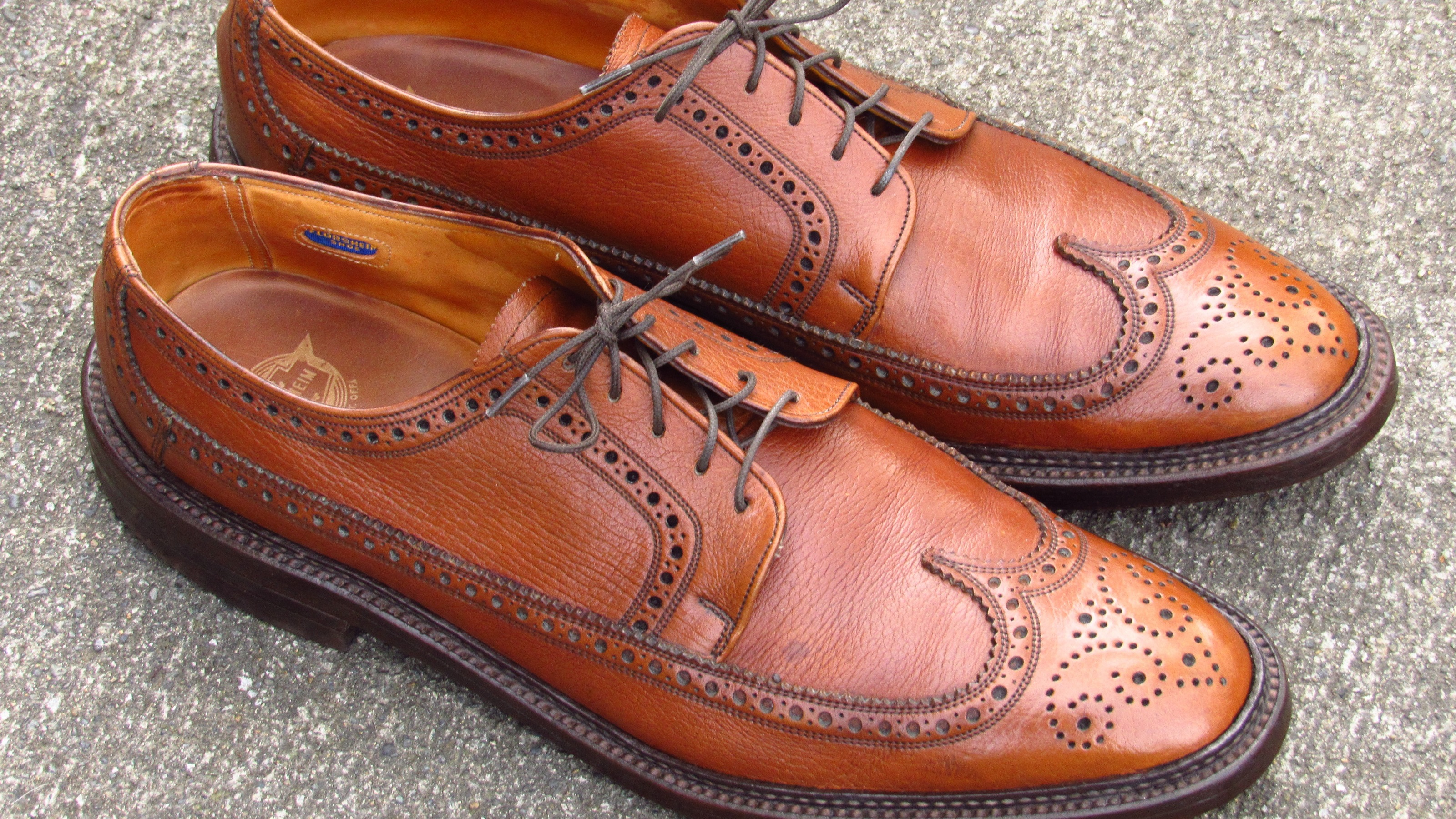


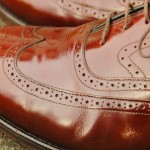

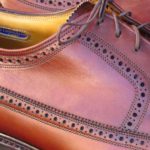
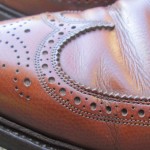
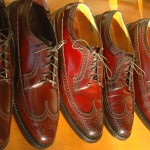
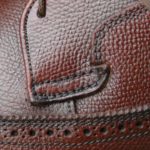
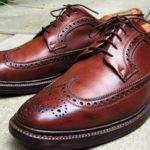
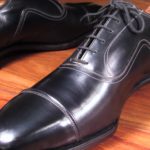
Amazing results again. Very interesting about the extra stitching on the welt. I can see the difference in the last, too.
Thank you.
Hey David,
thanks again for this amazing post! Have you ever tried the glycerin coditioning on your shells?
Yes I have tried it on shell. See this post: Nettleton restore
Thank you so much! Great Work
What type of glycerin do you use for this treatment, and where do you find it?
These posts are really interesting and helpful- thanks for sharing!
Thanks. I bought the glycerin on Amazon. I shared a link to a bottle below the article. You can get it at most drug stores.
I’ve used Corn Huskers Lotion on leather for years 🙂
Hey David,
have you ever tried regular Leather Conditioner from Lexol? Outside of the US, Lexol NF is pretty hard to get and I was wondering if one could use the normal thing instead.
Thanks!
Yes, I have used Lexol conditioner. Its a good product too. It can leave a film on the leather so I like using another conditioner like Bick 4 after it.
Those look fantastic. Wondering if a deep conditioner like the saphir dubbin would do the same as the glycerine ?
https://www.hangerproject.com/saphir-dubbin-waterproofing-polish.html
Good question. I have not used that product but the reviews are great. I need to order it. I have only worn this pair once thus far. Its been raining for 3 months straight here in Seattle. Trump needs to fix that. Now.
Thank you! Make American weather great again!
I just ordered some…..never tried it
I’m currently doing the Glycerin treatment to 3 pairs of vintage boots (1920s-1930s) after doing the cleaning with Lexol (I was really surprised about how much dirt and polish came out)
I was wondering if this treatment would work for Nubuck or Suede. I’ve cleaned a pair of nubuck shoes with Omnidain and I feel like they could do with some conditioning. Is the Saphir spray all it needs?
Thank you!
Your blog and posts over at Styleforum are really helpful.
Sorry but I haven’t tried this method on suede or nubuck. I have a two vintage suede shoes in the “museum” that I need to clean and condition. On non-vintage suede, I use a suede brush and eraser.
I am interested in how your boots turn out. Send me a photo or post them on SF.
I guess I won’t be playing with the idea and I’ll stick to known methods for Nubuck and Suede.
I’ll register on SF and post picture of some of my shoes over there. I’m mostly a lurker but the Shoe Care, Shoe Making and Vintage Shoe threads are very interesting.
Thanks
I need to have an area to post photos on this site. Someday. Good luck.
Just tried this, but using Paraffin instead of Glycerine. I tried to continue with cream and waxes but only waited a few hours, and I could not get any shine from them, so I guess I should have waited a few days (which is what I will be doing now) before polishing…
I just compleated glycerin treatment on a pair of royal imperial 97625. It did a great job removing the creases and curl after a night with trees.
A good polish and edge sealing and we will be well on our way to a long future together.
Excellent. Let me know how they wear
Hey David – getting ready to try the Glycerin treatment on some 1977 AE’s. Was just curious about the ratio of Glycerin to water you use. You mention you use 2 parts water to 1 part Glycerin. However reading the Smithsonian link you provided, they use 2 parts Glycerin to 1 part water. So, just wanted to make sure your listing was correct, and if so was curious why you decided on the different ratio. Never done this before so just want to ensure I’m doing it right. Thanks!!
Yes, I have been using 2 parts water and 1 part glycerin. Good luck
Is the glycerin conditioning advisable for CXL???
I would use an oil based conditioner like Lexol NF.
Ah, so I can buy some of that instead of spending some $20 for 3 ounces of VSC?
Hi David! Great article as always! I am not sure if I have asked this question earlier, forgive me if I have.
I was advised by a friend to use NeatsFoot Oil on a Pair of Thrifted Floresheim Shell Cordovans. I guess I went too far in applying too much of the NF Oil. It now looks darker and has a very MattE finish to it. What would you suggest I do?
Thanks for your advice, as always!
Sounds like they are over conditioned. Let them air out for a few weeks. The matte finish can be likely removed with some Bick4 but give them some a weeks before you do it. The shoes will probably be fine.
Thanks, David! I’m just brushing them every day!
Hi David, I see that you have used NeatsFoot Oil for Conditioning and then you also coat them with glycerin for conducting. Is there a reason you prefer these two different things for Conditioning? Thnx
That’s a good question. I was wanting to have both oil and glycerin based conditioning. You probably don’t need both. The glycerin bath is better for reshaping shoes. Sorry, that’s not a great answer.
Thanks, David! So I followed your instruction and used the Glycerin method and it worked out great! Yes, you are right about it belong reshape shoes. I draped the shoes in Glycerin Cloth overnight and found them in great shape the next morning. Thnx again 🙂
That’s great to hear! Read.
Dear Sir,
I happen to be a big admirer of your work over years and have learnt a lot from you. So thank you very much!
I tried this glycerine/water/cotton strips technique last week on a lovely pair of HESCHUNGS plain brown derbies owned by my father (bought in the 90s). They were just thrown in the garage for more than a decade and I stumbled upon them. Since no shoe trees were used, there was extensive creasing as well as some curling. But the shoes in general were in great shape.
I, thus, decided to use the knowledge I gained from this article and decided to renovate them. Cleaned them up, used RENOMAT on them. And then decided to use cotton strips soaked with two parts of water and one part of glycerine on them for 8 hours. Placed shoe trees inside during the process of course. After 8 hours, I removed the strips and put them to dry.
The problem is that the leather has become extremely rough and uneven on the toe area. There is some small swelling on the leather in different parts of the toe area. It’s like big mosquito bites; at least it looks that way. It seems I have totally messed up the shoes. The shoes are drying now for the last five days and dry. I was wondering if you could guide me on how to remove these “bumps”?
Any help in this regard would be highly appreciated.
Thank you once again, Sir.
It might be that the areas that are bumps absorbed more solution than other areas. Leather swells a bit as it absorbs moisture. Waxes or finishes on the leather surface can keep out moisture. Usually swelling isn’t permanent and may go away after the leather fully dries. If it doesn’t, try soaking the entire shoe in water for a number of hours and then letting it dry. That may even out the leather surface. Hope that helps.
Thank you very much for your kind reply. I’ll soak them in a tub of water in that case for two hours and will let them dry. Will let you know.
Hi David!
Question: Can I use this Glycerin Conditioning Method on Shell Cordovans?
Thanks for your advice!
A pair of my light brown dress shoes had an unfortunate step in a puddle of melted slushy, which left some stains on the upper. I wasn’t able to get those stains out using leather cleaner or saddle soap. I decided to try the glycerin treatment. My thought was that if I saturate the shoes using a different sweet, slightly sticky solution, that it might help reduce the staining. At the end of the process, the stains were actually gone completely! Not sure if this would work for other stains, but I found this result interesting. The conditioning aspect was also good–the leather feels very soft and supple afterwards!
Great. I am glad it worked out and the spots were eliminated.
Do you think it would be overkill to glycerin condition a NOS pair of shoes? I’m new to the hobby and got burnt recently on a pair that I thought had a minty upper. Cracks everywhere on the first wear even after aggressive conditioning. Just want to be cautious.
I think its a viable strategy. I haven’t seen any long term issues with glycerin conditioning. You just hope the pair was stored in a cool basement rather than a hot attic. At a certain point, leather starts to decay and no amount of conditioning will fix it.